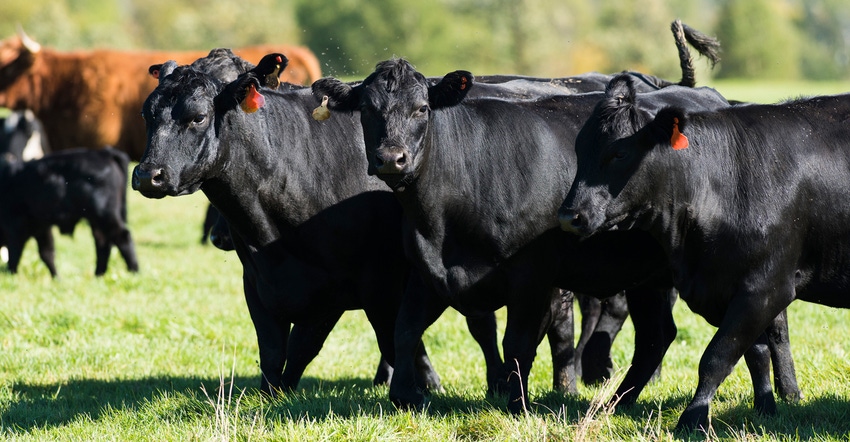August 20, 2018

Do you remember when nearly everyone had a friend, neighbor or relative who had farm-raised eggs, fresh from the farm-raised meat, or milk straight from the cooler that you could make ice cream with it? What about the days when no one questioned your livestock or crop management practices, didn’t question why you treated a sick animal with antibiotics in hopes of getting it well, and simply knew that if you were feeding it to your family, it was equally safe and nutritious for their family?
Unless you’re at least 40 or 50-plus years old, perhaps you don’t.
Today, consumers are increasingly expressing concern for not only safety and quality in the foods they feed their families, but also animal health and the sustainability of the production systems used in the raising of their food. These evolving consumer concerns have caused Beef Quality Assurance to come to the forefront in recent conversations involving the future of our beef cattle market.
BQA originated in the ’80s due to injection-site lesions on cattle that started drawing the negative attention of consumers. Since then, the “needles in the neck” approach to BQA has evolved into concerns for overall quality and sustainable production. Consumers are scrutinizing agricultural practices that affect animal well-being and air and water quality. Going far beyond just its original parameters of food safety, BQA now also encompasses animal performance, health, carcass characteristics and eating satisfaction that can all be affected as a result of management decisions made throughout the beef production system.
A lot has changed since the inception of BQA more than 30 years ago:
• Back then, there was no Ohio Livestock Standards Board.
• Livestock Quality Assurance wasn’t taught to every 4-H and FFA member repeatedly — each and every year of involvement in a livestock production project.
• The phrase “social license to farm” didn’t exist yet.
• The phrase “pink slime” wouldn’t even be coined for several more years.
• If it wasn’t Where’s the Beef!, it was Beef. It’s What’s For Dinner.
Add it all up and during that time BQA has evolved into what we know it as today. We’ve essentially lost another generation of Americans who were either directly or indirectly from a farm. Or, as I sometimes put it, gone is another generation of those who understand even the most basic concepts of animal agriculture.
How far gone? Francis Fluharty, recently retired coordinator of the Ohio Beef Industry Center, shared a recent disturbing encounter.
Fluharty and his wife Janis went to dinner at a "steak" restaurant. As he describes it, perhaps “not a great steak restaurant, just a restaurant we hadn’t been to for years.”
Janis ordered a filet mignon. When her meal came, it wasn’t a filet, but a really small Delmonico. A Delmonico is a great steak, but it's valued at least $10 less.
If you know Francis Fluharty, then you likely know what happened next … he asked to see the manager. When she came and was questioned, she said, “that’s a filet, we don’t serve Delmonico steaks here.”
Again, if you’ve ever enjoyed one of Fluharty’s Ohio Beef Feedlot Schools, his response to that won’t surprise you either: “That’s not a psoas major, that’s a longissimus dorsi with a spinalis dorsi on the top. Also, that’s about 8 to 9 square inches. I don’t know how big the steers are that your steaks come from, but a 1,300-pound steer would have, at best, a 4-square-inch filet.”
Needless to say, the restaurant manager offered no further response.
The point is, now is the time to step up and go beyond simply becoming BQA certified and clearly tell the story of how beef is raised. When a steak house doesn’t understand what they are serving — or perhaps decided they couldn’t afford to correctly identify a filet — imagine how confusing it must be for consumers. Consider that few understand even the basics of beef cattle production. Imagine how gullible they’d be when offered misinformation about anything from meat cuts to sound production practices.
Was it simply a “bait and switch” tactic on the part of the steak house the Fluhartys visited, or just a lack of knowledge? Does it really matter?
Some of us will continue to long for the days when multiple generations of the family came together on the farm to harvest enough livestock to feed the entire family for the winter. Or the days when the ladies of the farm were turning the tapes while the men were grinding the trim so the sausage could be stuffed and smoked.
For most of America, those days are gone and, as an industry, we need to accept that each generation is more removed from the experiences and first-hand knowledge that a farm lifestyle allowed in the past.
As cattlemen, educators, or beef cattle industry professionals, simply becoming BQA certified is a start, but it isn’t enough anymore. The task of teaching the growing number of generations who are now far removed from the farm that what we produce is nutritious, sustainable and humanely raised is the responsibility of those of us who remain involved in, and passionate about, the continued success of the beef cattle industry.
Smith is a Program Assistant in the Fairfield County OSU Extension office and a member of the OSU Extension Beef Team. The Beef Team publishes the weekly Ohio BEEF Cattle letter which can be received via email or found at beef.osu.edu.
About the Author(s)
You May Also Like




